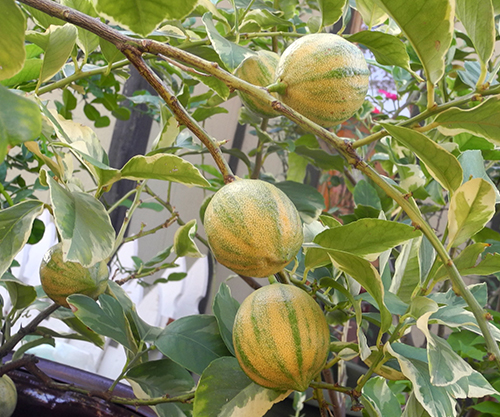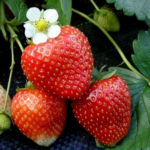Lemon variety Eureka
Eureka belongs to the most famous world varieties, both industrial and greenhouse, indoor. The variety has been known for a long time, especially citrus breeders from California did a lot to popularize it. Despite its widespread occurrence, it is relatively rare in amateur collections in the post-Soviet space.

History of creation
Eureka, like many other citrus varieties, has its own legend. It is difficult now to say how much it corresponds to reality. In any case, many of her moments have remained really documented.
So, most likely, the ancestor of the variety came to America from Italy, around the middle of the 19th century. On one of the plantations near Los Angeles, local experts worked to improve Italian fruits. To this end, they sowed lemon seeds in order to select the most promising trees later.

By 1858, they managed to select one of the plants with good varietal and commercial qualities. After about 20 years, his grafted descendants ended up in the hands of a venerable specialist, Thomas Garey. He improved the cultivar, multiplied it, and, using his authority, gave the new cultivar a name - "Eureka Gareya". Soon enough, the new lemon competed with the then undisputed leader of the American market - the variety “Lisbon". This was largely because the new plant had a number of excellent qualities. Let's talk about them!
Interesting! Among the exports of industrial varieties of lemons, Eureka ranks first in all countries except Italy.

Description of the plant
The crown is of medium size (in rooms, usually no more than 1.5 meters), it is characterized by increased spreading. The fact is that the branches of Eureka are thin, drooping, often hanging down with their tips. In general, it is worth noting that the variety, due to its popularity, has a lot of clones and cultivars, sometimes very different in appearance.
For information! There is a strong belief that Eureka was used by breeders to create the popular lemon "Lunario».

The branches of this fruit are almost devoid of thorns, there are relatively few leaves on them, they are dark in color, rounded. Fruits are formed mainly at the ends of the branches, bending them strongly, which creates an additional "weeping" for the tree.
It should be noted that in recent decades, the variegated form of our hero, Variegated Eureka limon, has been in high demand in the world of citrus growers. It is appreciated for its unusual, attractive leaves and unusual fruit color. On the other hand, the size of the fruit, and the taste characteristics, are significantly inferior to the "classic" Eureka.

The trees of our variety are thermophilic, they are afraid of sudden changes in temperature. In addition, lemon is picky about moisture levels and is susceptible to pest attacks. These qualities contributed to the fact that in indoor citrus growing it is considered quite whimsical.
Flowering features
The plant is remontant, it can bloom all year round. The flowers are large, fragrant; in variegated varieties, the buds are almost purple. Flowers are placed mainly on the edges of the branches.

Description of fruits
High yield is one of the most important advantages of the variety! Even at home, a developed specimen is capable of producing up to eight dozen fruits per year. In good greenhouses and outdoors, this figure will be four times more!
Eureka fruits have an average weight of about 120 - 160 grams. Their shape is different, from almost round to elongated, cylindrical. There is always a nipple at the tip of the fetus, separated by a barely noticeable hollow.The shape of the nipple can also vary, being sometimes flat or obviously pointed.

Variegated form
Other characteristics of these lemons:
- the skin is dense, of medium thickness, bright yellow;
- small grooves are often visible on the surface, the surface texture is porous;
- high taste, fruits are distinguished by increased sourness, abundance of juice;
- the pulp has a slightly greenish or yellowish tint, soft, almost devoid of seeds.
- excellent transportability, high keeping quality.
Interesting! As already mentioned, the fruits of variegated forms are significantly different. In particular, they are striped during ripening, with alternating green and yellow colors. Their pulp is deep pink in color, while the juice is colorless.
Thus, Eureka is predominantly an industrial variety, its home keeping is not easy. At the same time, variegated forms gained popularity for their increased decorativeness.








